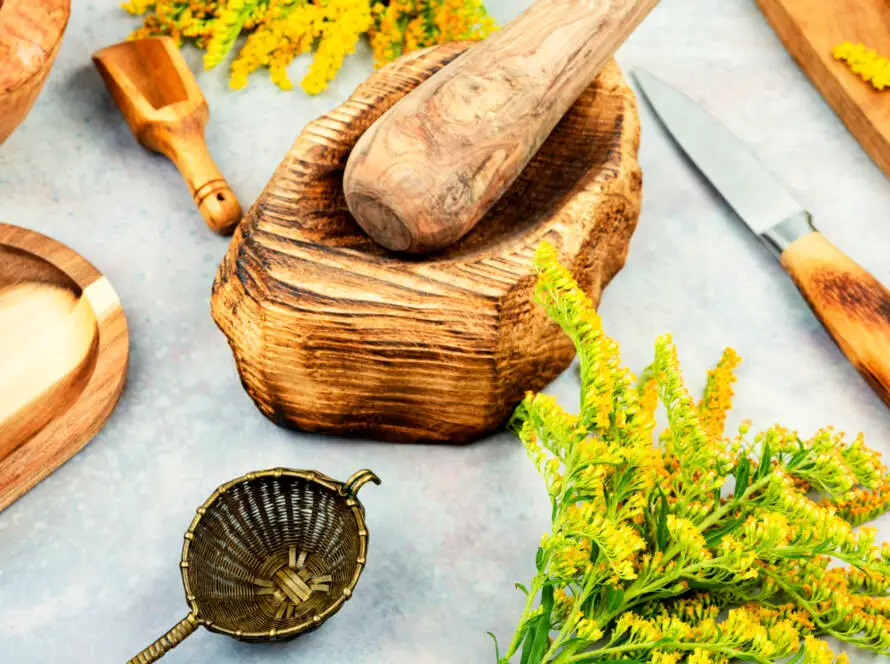Introduction
This fact sheet provides essential information about chamomile, a flowering plant native to Europe and Western Asia that is now widely cultivated in North America. Renowned primarily for its calming properties, chamomile is a staple in herbal teas and among the most popular herbal remedies. It is classified as both an annual and a perennial herb, depending on the specific variety and growing conditions, making it versatile and accessible.
Common Names
- Chamomile
- German Chamomile
- Roman Chamomile
- Matricaria
- Chamaemelum
Latin Names
- Matricaria chamomilla (German Chamomile)
- Chamaemelum nobile (Roman Chamomile)
Uses
Chamomile is celebrated for a variety of uses, which include:
-
Promoting Sleep and Alleviating Insomnia: Chamomile is widely recognized for its mild sedative properties, making it an excellent choice for those struggling to fall or stay asleep. Consuming chamomile tea before bedtime can help many relax and prepare for a restful night.
-
Easing Digestive Issues: The herb helps soothe digestive discomfort, including indigestion and bloating. A warm cup of chamomile tea can be particularly soothing after a heavy meal.
-
Anti-inflammatory Agent: Chamomile possesses anti-inflammatory properties that can be beneficial for various health conditions. It may help reduce inflammation in the body, which is particularly advantageous for chronic inflammatory conditions.
-
Relief from Anxiety and Stress: Many people turn to chamomile as a natural remedy for anxiety and stress relief. Its calming effects can promote tranquility and ease mental tension.
-
Topical Uses for Skin Conditions: Chamomile is often used topically to treat various skin ailments, including acne, eczema, and dermatitis. Its anti-inflammatory and soothing properties make it an effective ingredient in numerous skincare formulations.
-
Popular Beverage for Relaxation: Chamomile tea is not only consumed for its health benefits but also enjoyed as a comforting beverage. Its pleasant aroma and flavor contribute to its enjoyment worldwide.
Administration
In traditional medicine, chamomile flowers are commonly utilized in teas, tinctures, and extracts. The dried flowers can be steeped in hot water to make chamomile tea, which is consumed for its soothing effects. For those seeking concentrated benefits, chamomile extracts are available in various forms, including capsules and liquid drops.
Scientific Evidence
Chamomile has been extensively studied for its numerous health benefits. Research shows that it has anti-inflammatory, antioxidant, and mild sedative properties, which contribute to its effectiveness as a natural remedy. Studies suggest that chamomile can improve sleep quality, enhance relaxation, and significantly alleviate anxiety symptoms. While the research is promising, more extensive clinical trials are needed to validate these findings across diverse populations.
Side Effects and Cautions
Chamomile is generally regarded as safe for most individuals when consumed in moderate amounts. However, those with allergies to plants in the Asteraceae family (like ragweed) may experience allergic reactions. Symptoms can include skin rashes or respiratory issues. Furthermore, chamomile may interact with certain medications, particularly blood thinners and sedatives, potentially enhancing their effects. Therefore, it is advisable to consult a healthcare provider before using chamomile for medicinal purposes, especially for pregnant or nursing women.
By understanding the benefits and potential risks of chamomile, individuals can make informed decisions about incorporating it into their wellness routines. Whether consumed as tea or applied topically, chamomile’s soothing properties have earned it a secure place in herbal medicine.
Resources
- Drugs.com
- Wikipedia.com
- Herbal medicine texts and studies on chamomile’s health benefits.
- Research articles on the pharmacological properties of chamomile.
This summary highlights the key aspects of Chamomile, including its traditional uses, potential benefits, and safety considerations.
Disclaimer
The information I’ve shared about herbs is for educational purposes only and is not meant as medical advice. While many herbs have been traditionally used for their potential health benefits, individual responses may vary, and the effectiveness of herbs can depend on various factors, including personal health conditions and interactions with medications. It is essential to consult with a qualified healthcare professional or a licensed herbalist before using herbs for medicinal purposes or making significant changes to your health regimen. This information should not be considered a substitute for professional medical advice, diagnosis, or treatment.


